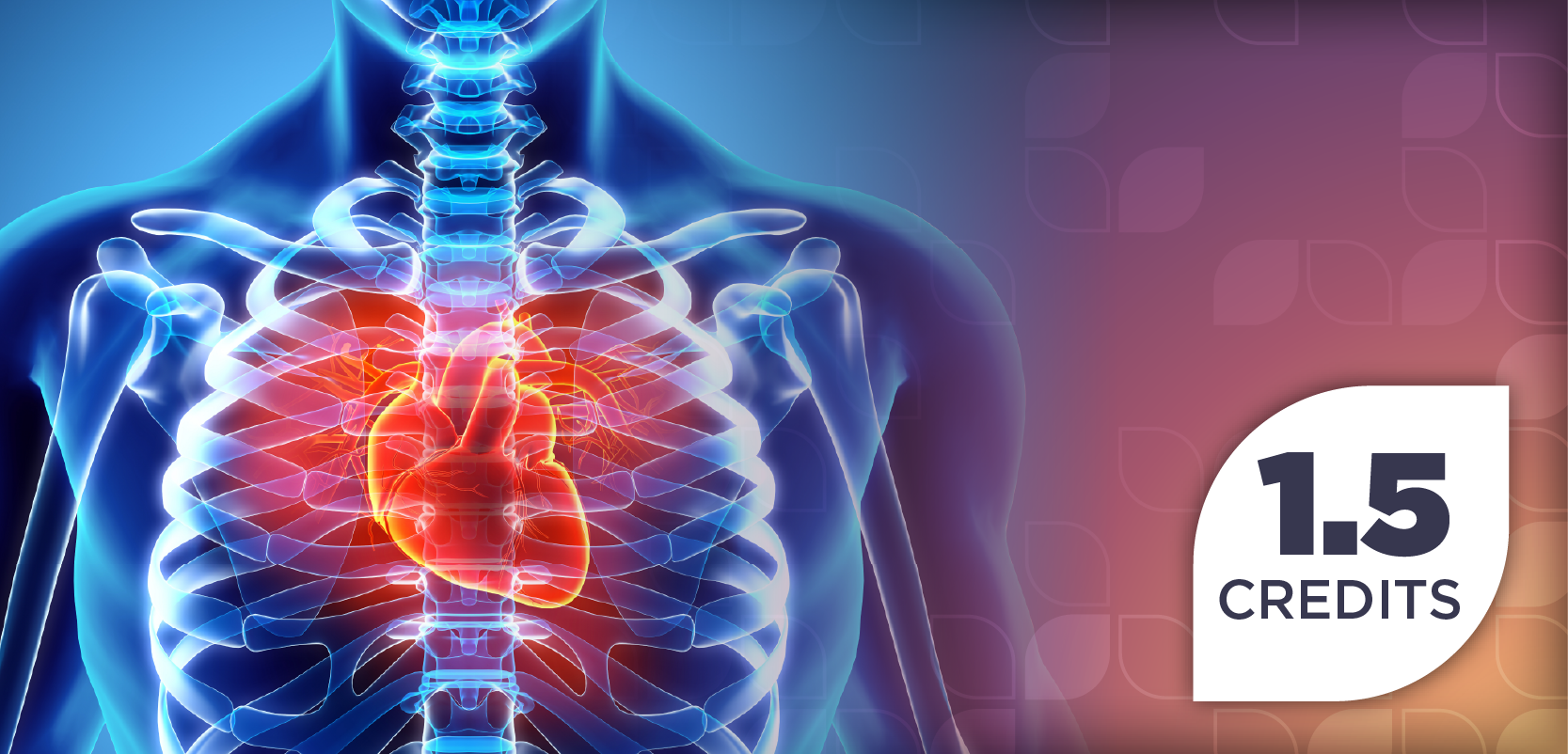
- January 2021
- Volume 89
- Issue 1
Spot Heart Failure a Mile Away
Telemedicine and remote monitoring advancements can help prevent hospitalizations for the condition.
The body depends on heart to pump blood and deliver nutrients and oxygen to the body’s cells.
Heart failure (HF), the heart’s inability to maintain its workload, leads to inadequate circulating blood supply.1 About 6.2 million American adults have HF, leading to considerable health care costs, ill health, and mortality.2 Patients with HF experience coughing, fatigue, shortness of breath, and a decreased capacity to complete activities of daily living, such as climbing stairs or even walking.1,3
HF is chronic and progressive. The heart tries to compensate for its inability to pump enough blood by developing more muscle mass, enlarging, and/or pumping faster. Blood vessels also narrow to maintain blood pressure, and the body diverts blood away from organs, such as the brain, heart, and kidneys, and “less important” tissues.3 These measures mask, but don’t solve, the problem. Eventually, usually years after HF begins, the body and heart fail to keep up and patients will experience the aforementioned symptoms.3
When providers diagnose HF, almost 10% of patients are hospitalized emergently with worsening symptoms within 1 year.2 Readmission rates within 1 month are as high as 25%.2 Identifying decompensation in HF patients before emergency department admission is warranted. Technological advances in recent decades allow more intensive community-based monitoring to identify decompensation early; prompt intervention, such as changes to diuretic dosage, in those who are no longer euvolemic; and support lifestyle and medication adherence.2
SELF-MONITORING AND TELEMEDICINE
Bureaucratic, economic, and geographic barriers often hinder in-person multidisciplinary care.4 The HF team can provide structured telephone support for patients as part of disease management or postdischarge services.2 Telemedicine, such as telehealth, embraces electronic communication via mobile wireless device, phone, and/or smartphone, with or without video to diagnose or treat patients remotely.
Telemedicine’s main HF goals are to prevent and treat disease exacerbations and promote patient self-empowerment.4 With technology, patients can help providers make care decisions from afar by capturing data that signal decompensation and include blood pressure, body weight, heart rate and rhythm, and oxygen saturation.4
The American Heart Association recommends that patients have an action plan for when symptoms arise.5 Its Self-Check Plan for HF Management, summarized in TABLE5, uses a stoplight-type pattern to categorize symptoms. It empowers patients to reach out to providers early.
IMPLANTED AND WEARABLE TECHNOLOGY
The direct-to-consumer health technology industry is booming. Nearly 20% of Americans use fitness monitors to track their health statistics.6 Although marketed for general fitness and health purposes, these wearable devices are becoming gradually more accurate and sophisticated and can be considered biological sensors.6 Telemedicine is largely focused on predicting acute decompensation associated with fluid congestion, including a warning alert when a patient gains more than 2 lbs in a day. However, body weight variability is not always an accurate indicator of total body water or decompensation.4
Researchers are investigating devices that can recognize other indicators of worsening HF. These include:
- Increased ankle swelling. In HF, fluid accumulates in the lower body, leading to edema. No mechanism exists to measure lower-extremity swelling except visual inspection.7 For this reason, researchers have pilot-tested wearable technology called SwellFit. Worn around the ankle, SwellFit monitors the ankle’s curvature. Preliminary data showed that it successfully differentiated swelling from motion artifacts, such as change in values caused by external force or sensor rotation.7 The device’s creators plan to test SwellFit on hospitalized patients with HF to demonstrate feasibility and reliability.
- Pulmonary artery pressure. The first implantable monitor the FDA cleared for HF monitoring is the CardioMEMS HF System, consisting of an implantable sensor, delivery system, and Patient Electronics System.8 The FDA cleared the device for patients with class 3 HF who were hospitalized in the past year. A provider implants the paper clip—sized sensor into the pulmonary artery via the delivery system (catheter) and it measures and monitors pulmonary artery pressure and heart rate. Patients take daily readings using the Patient Electronics System, which transmits the results electronically to their providers.8 This remote monitoring aims to reduce HF-related hospitalizations.
- Electrocardiogram (ECG). Left untreated, atrial fibrillation can precipitate HF, so at-home ECG monitoring is helpful. The FDA cleared a self-administered ECG called Kardia.9 Patients simply open the Kardia application on their smartphones, place their fingers on 2 electrodes, and receive ECG results instantly.
CONCLUSION
Theoretically, monitoring these physiological signals could permit a more empowered and personalized experience for patients living with HF. Technology could promote more appropriate and frequent therapy adjustments and detect warning signals ahead of decompensation.
KELSEY GIARA, PHARMD, is a staff pharmacist at CVS Health in Pelham, New Hampshire.
REFERENCES
- American Heart Association. What is heart failure? Updated May 31, 2017. Accessed December 14, 2020. https://www.heart.org/en/health-topics/heart-failure/what-is-heart-failure
- Brahmbhatt DH, Cowie MR. Remote management of heart failure: an overview of telemonitoring technologies. Card Fail Rev. 2019;5(2):86-92. doi:10.15420/cfr.2019.5.3
- CDC. Heart failure. Updated September 8, 2020. Accessed December 14, 2020. https://www.cdc.gov/heartdisease/heart_failure.htm
- Gensini GF, Alderighi C, Rasoini R, Mazzanti M, Casolo G. Value of telemonitoring and telemedicine in heart failure management. Card Fail Rev. 2017;3(2):116-121. doi:10.15420/cfr.2017:6:2
- American Heart Association. Heart failure tools and resources. Accessed December 14, 2020. https://www.heart.org/en/health-topics/heart-failure/heart-failure-tools-resources
- Singhal A, Cowie MR. The role of wearables in heart Failure. Curr Heart Fail Rep. 2020;17(4):125-132. doi:10.1007/s11897-020-00467-x
- Kim S, Iravantchi Y, Gajos KZ, Grosz B. Swellfit: a wearable sensor for patients with congestive heart failure. Accessed December 14, 2020. https://www.eecs.harvard.edu/~kgajos/papers/2016/kim16SwellFit.shtml
- FDA. CardioMEMS HF System-P100045. Updated January 11, 2016. Accessed December 14, 2020. http://wayback.archive-it.org/7993/20170112091357/http://www.fda.gov/MedicalDevices/ProductsandMedicalProcedures/DeviceApprovalsandClearances/Recently-ApprovedDevices/ucm400550.htm
- Kardia Mobile. AliveCor. Accessed December 14, 2020. https://www.alivecor.com/kardiamobile
Articles in this issue
over 4 years ago
Let’s Take Care of Ourselves This Seasonover 4 years ago
Legislation Aims to Protect Children With Severe Allergiesover 4 years ago
Managing Inventory Well Is a Critical Functionover 4 years ago
OTC Cases: Influenzaover 4 years ago
Pharmacists Play an Essential Role in Managing Hypertensionover 4 years ago
Interactives: Case Studies (January 2021)over 4 years ago
Chronic Conditions Affect Brain FunctionNewsletter
Stay informed on drug updates, treatment guidelines, and pharmacy practice trends—subscribe to Pharmacy Times for weekly clinical insights.

















































































































































































































